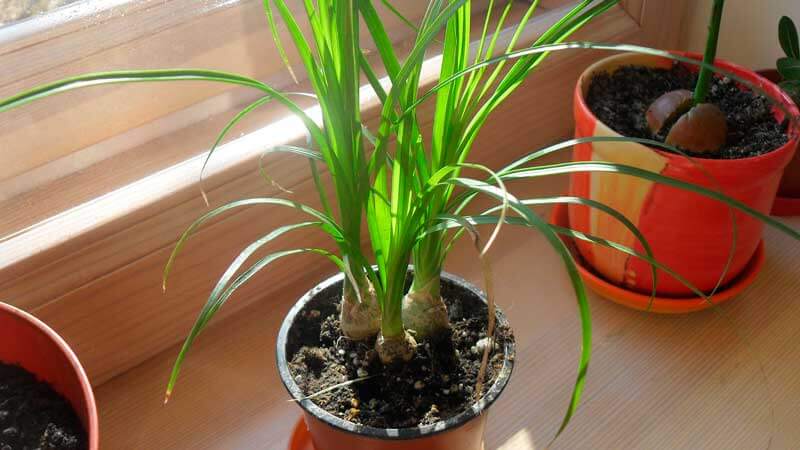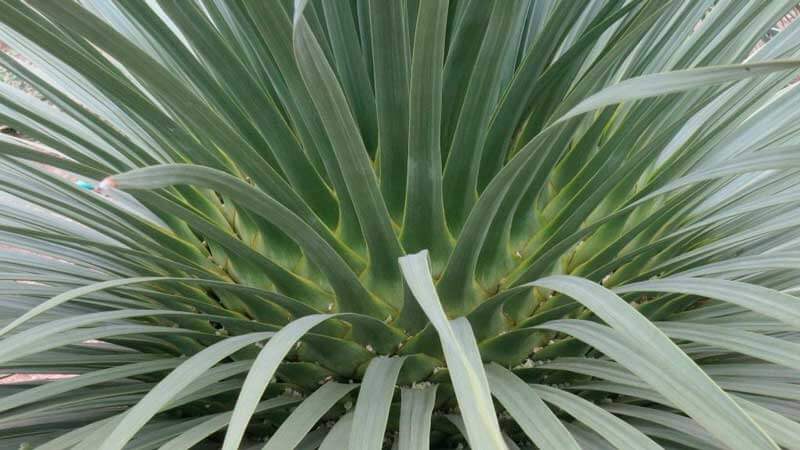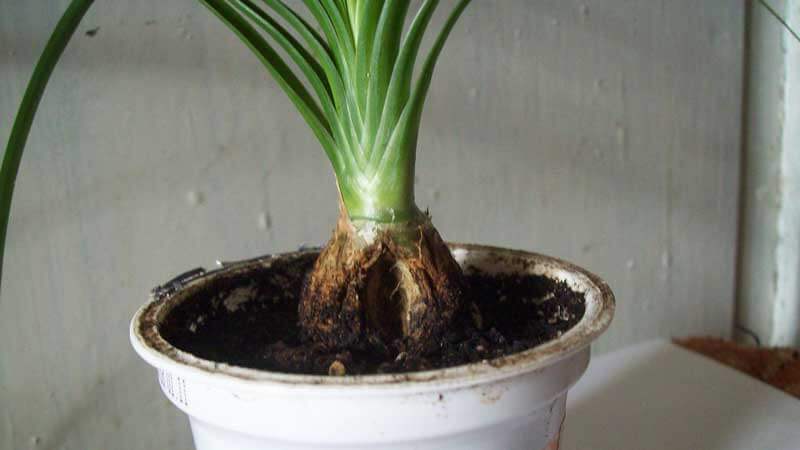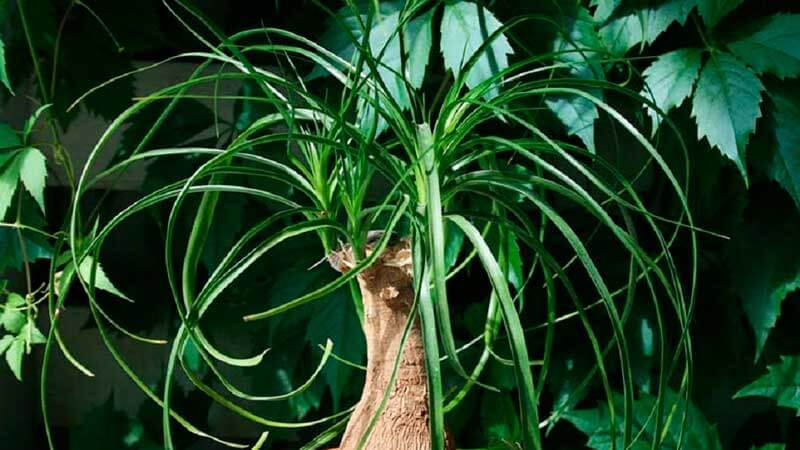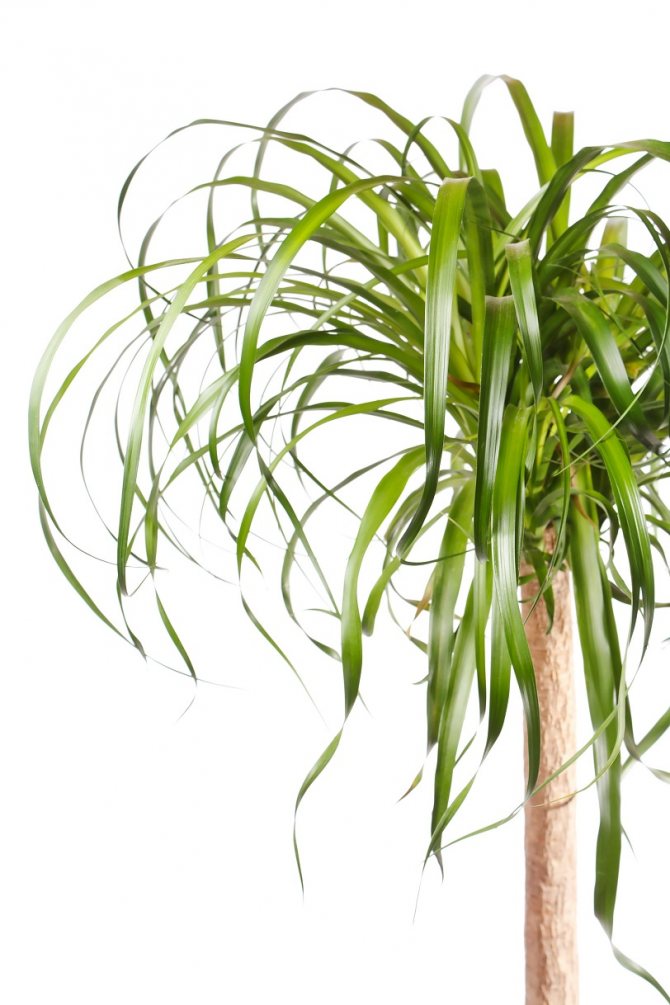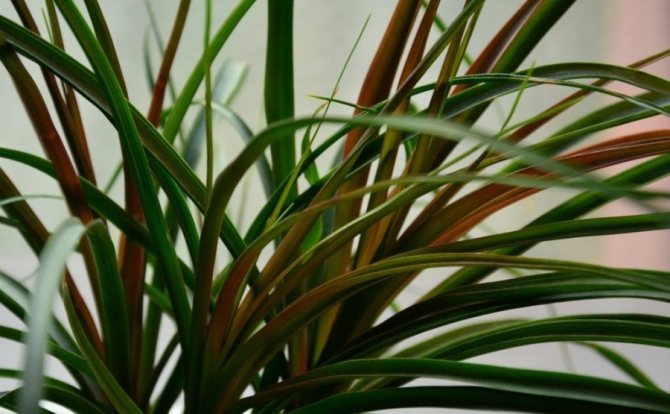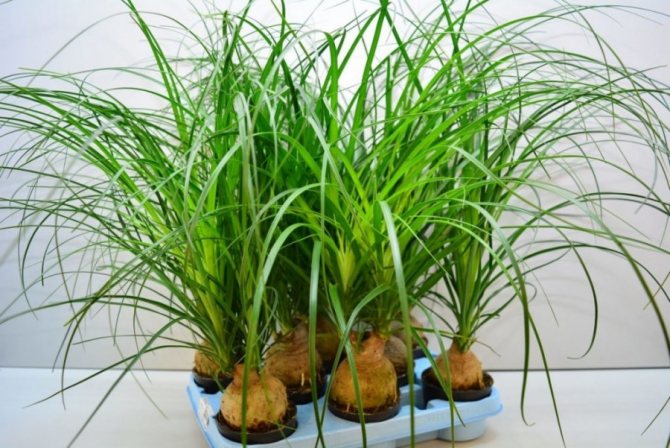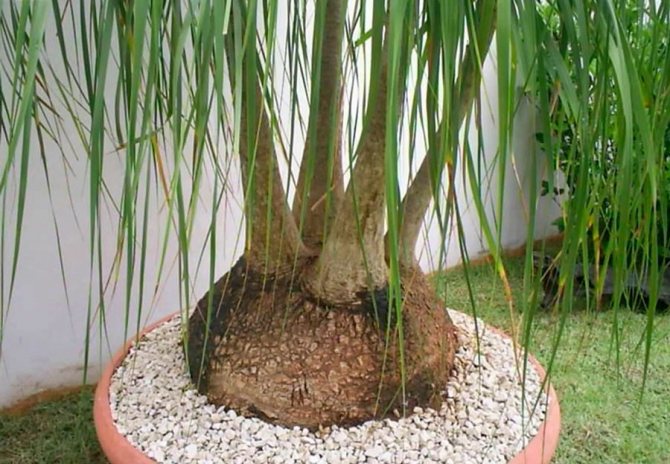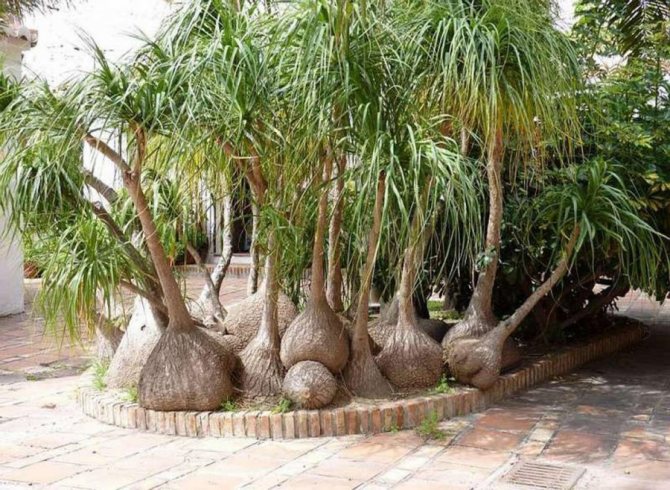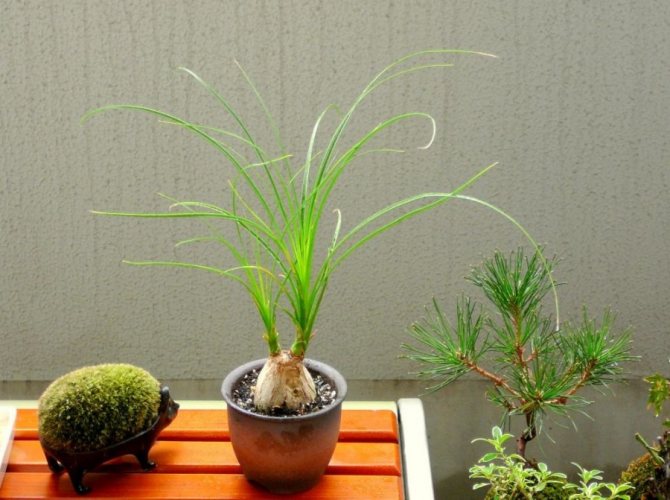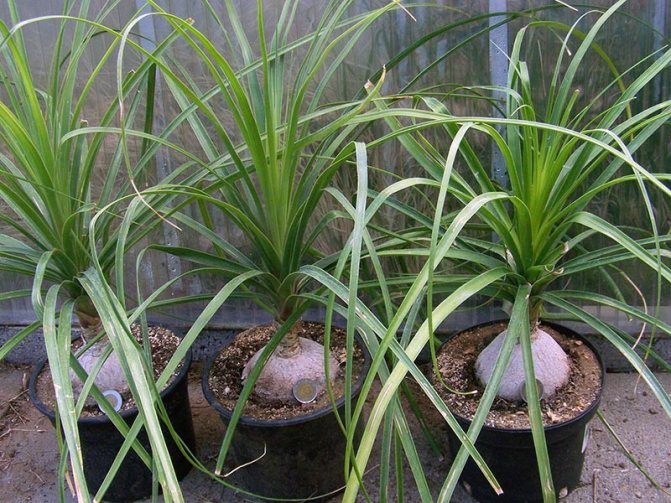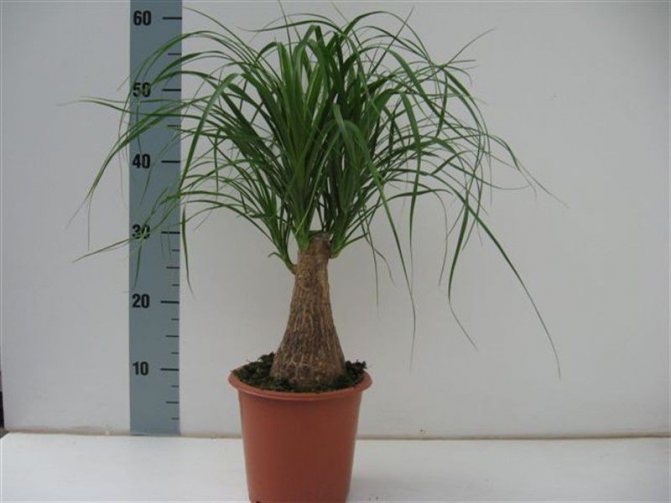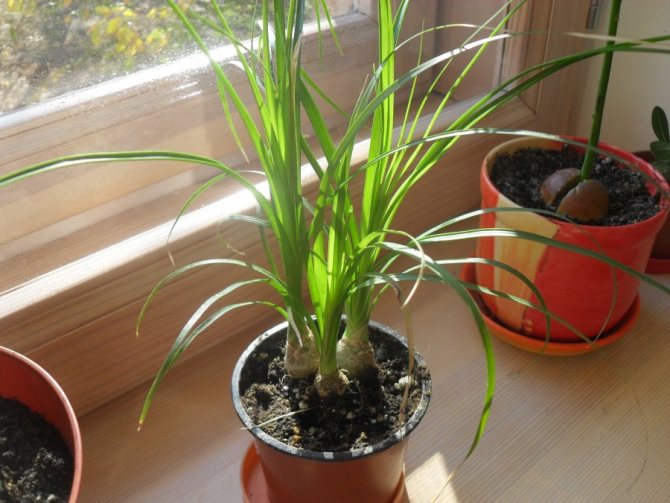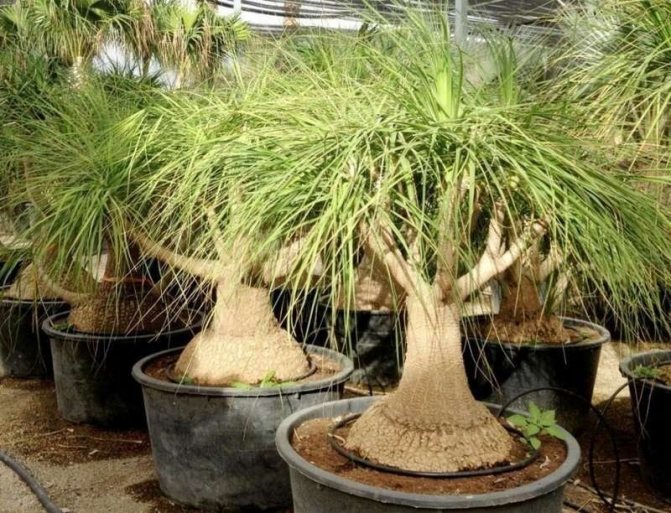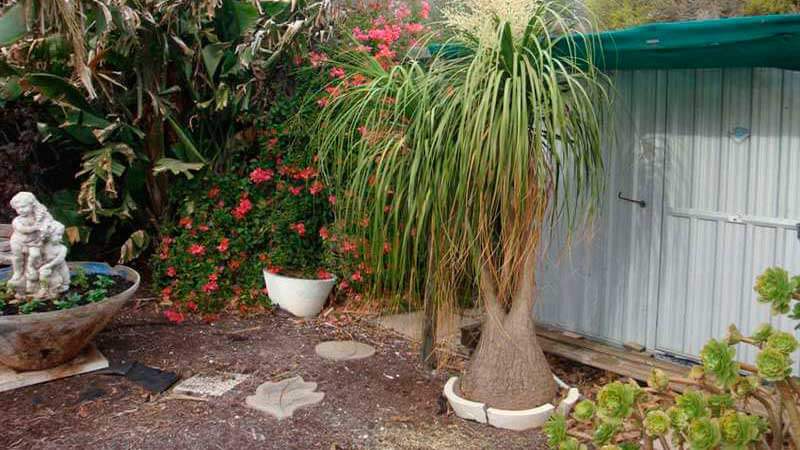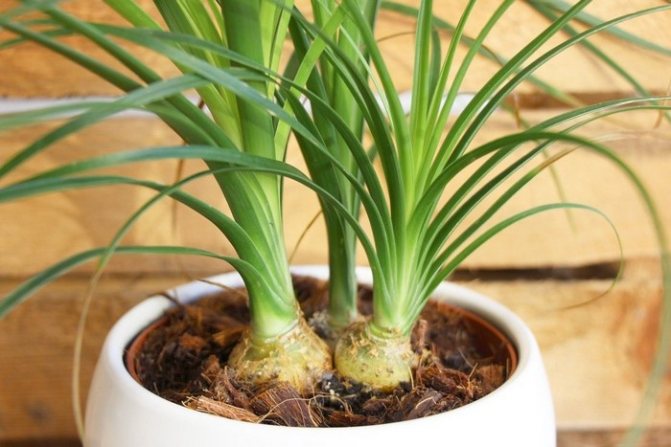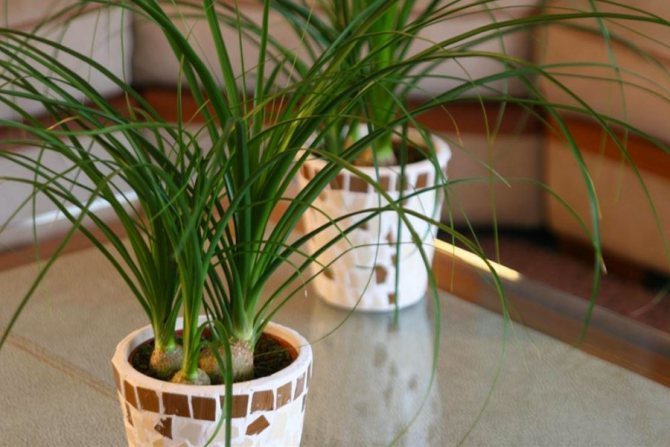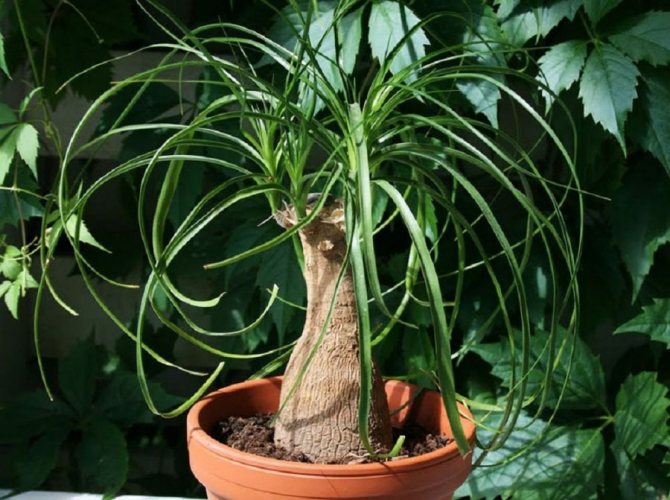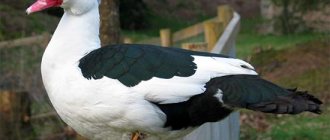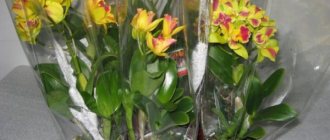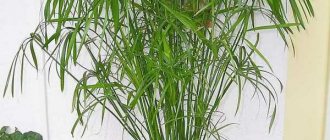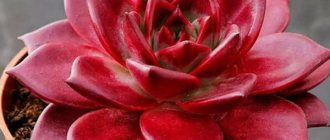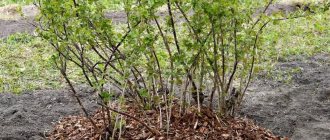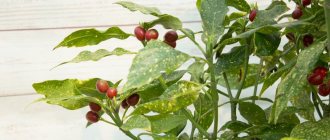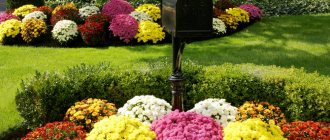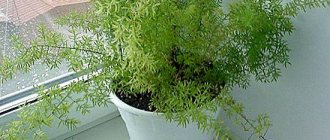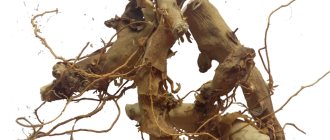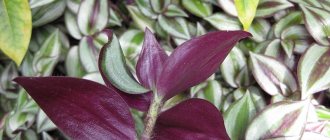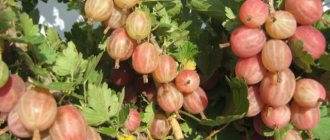True growers appreciate the nolin plant for its unpretentious cultivation. An exotic plant feels great on the windowsills of experienced and novice amateurs to grow various novelties in plant growing.
Caring for nolina at home is very simple, the plant does not require much work and cunning manipulations, as well as the formation of a complex soil composition.
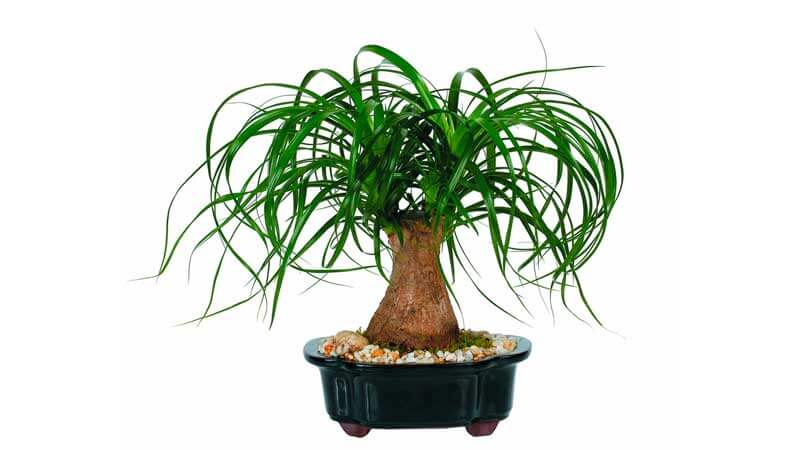
Basic rules for growing bokarnea, care
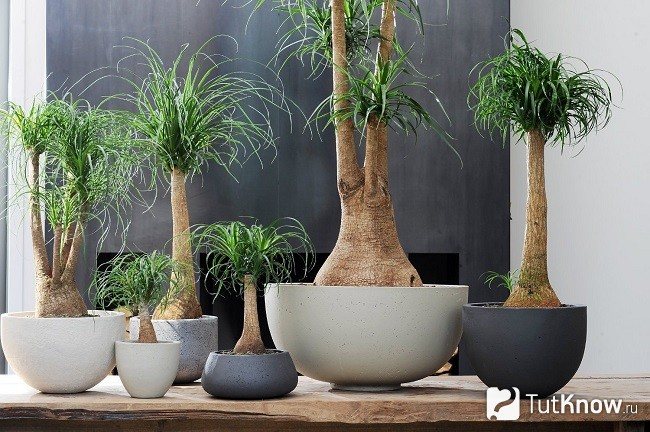

- Lighting
you will need a bright and constant, it is better to put the plant on a south-facing window. In other cases, you should highlight the zero with lamps. - Content temperature.
They maintain heat indicators within 24-28 degrees, in the winter months a dormant period begins and the temperature is reduced to 10-15 degrees. - Air humidity and irrigation.
Bocarnea does not need spraying, dry air does not harm it. Watering is carried out once a month, when the soil dries out, the main thing is not to allow the bay. During the resting period, moisture is greatly reduced. - Top dressing
carried out extremely rarely, only once a month with mineral fertilizers. - Transplanting and soil selection.
Young bokarnei are transplanted annually, adults every 3-4 years. The pot should be wide, but not deep. Planted at the same depth as before. It is better to use the transshipment method. The substrate is made up of equal parts of sod, leafy soil, humus, peat and river sand or from leafy soil, peat soil and sand (in proportions 1: 1: 2). Nolin can be grown hydroponically.
Transplant requirements
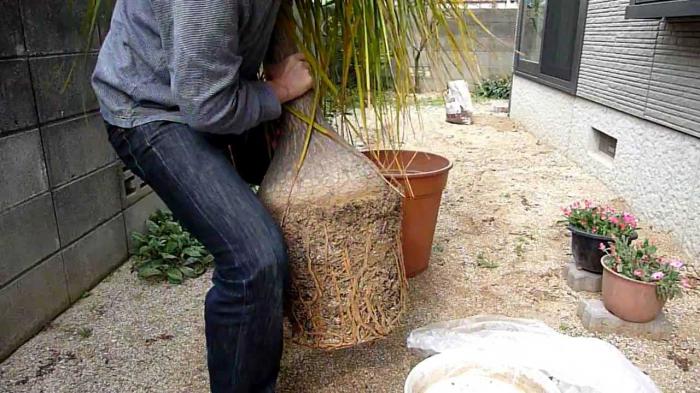

- A young plant requires an annual transplant, and an adult one after 2-3 years.
- For several days before and after transplanting, do not water the plant, nolina is a flower that is transplanted into dry soil.
- You should not transplant the bokarney immediately into a large pot, as this, at best, will slow down growth until the roots fill the entire space, and at worst will lead to rotting of the root system, choose a pot 2-3 cm larger than before.
- In no case should the thickening at the bottom of the trunk be buried in the ground.
Reproduction of bokarnei with your own hands at home
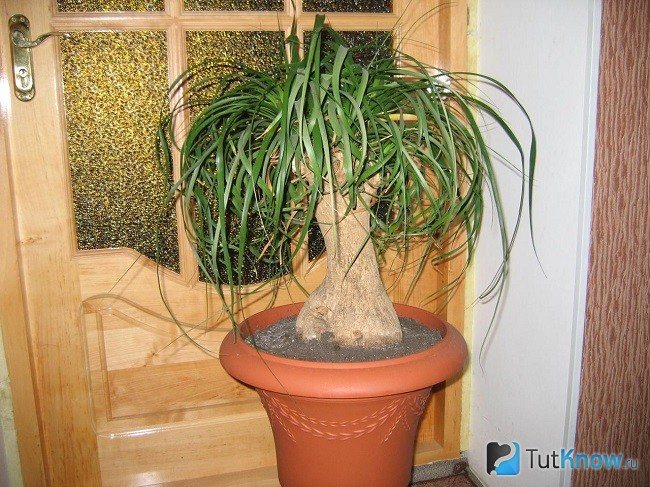

You can get a new "bottle tree" by sowing seeds or planting side shoots. But the growth of such plants is very slow and they will reach meter indicators only after a few years.
Before sowing, the seeds are soaked for two days in a weak solution of potassium permanganate. If the seeds are healthy and not affected by the fungus, then they immediately sink to the bottom. Sowing is carried out in containers filled with a mixture of any fertile soil and sand. The seeds are buried 1 cm, the soil is moistened and the container is covered with glass or plastic wrap - this will create conditions for a mini-greenhouse with increased moisture and heat. The container is placed in a well-lit place, but not in direct sunlight. The germination temperature is maintained within 20-25 degrees. Seeds will germinate for 3-4 weeks. Aeration will be required for 10-15 minutes every day and it is important to keep the soil slightly moist at all times. When the sprouts are old enough, they can be planted in separate pots with suitable soil.
Under the bark of nolina, it happens that dormant buds wake up and begin to grow, in this case they give rise to young lateral shoots.These shoots do not have roots and therefore, when separated from the mother trunk, they will need to be placed for 24 hours in a phytohormone solution that stimulates root formation. Then this "stalk" is placed obliquely in a peat-sandy substrate. Planted news will need to be covered with a glass vessel or wrapped in a plastic bag and placed in a warm, well-lit place. Rooting temperature should not go beyond 21-26 degrees. If the root shoots appear before the leaves begin to lack moisture, then the plant may well survive.
How to deal with nolina diseases and pests?
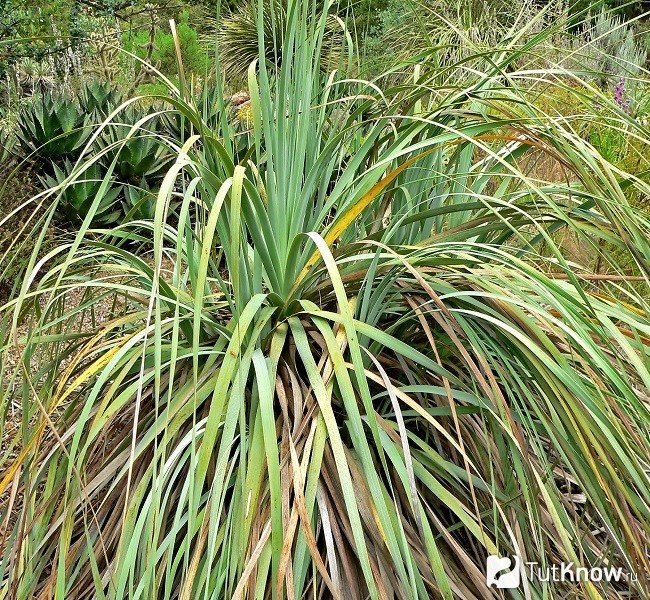

The difficulties that flower growers have to face in the process of growing nolina arise due to violation of the rules for keeping the plant, among them the following can be distinguished:
- If the tips of the leaves become dry and acquire a brown color, then for large specimens, this is normal, with heat indicators above 20 degrees, it will be necessary to spray the leaves.
- When the lighting is not sufficient, the leaf plates become sluggish, drooping and gradually darken. You will need to move the plant closer to the light source or carry out additional lighting of the bokarnea.
- If the lower leaves of a plant dry up and then fall off, when the rest of the deciduous mass looks normal, then this is a natural process. Dried leaves should be removed by cutting them off at the very base.
- With an excess of moisture in the soil, the stem begins to rot, it becomes soft and springy under the fingers. In this case, the plant is unlikely to be saved.
- If the trunk of the bokarnea began to dry out and wrinkle, then this is a consequence of too long wintering, it will be necessary to carry out gradual regular moistening of the soil with the arrival of spring.
- When few new leaves grow and their growth rate is very low, then this indicates a lack of nutrition, it will be necessary to feed or transplant nolina.
- In the case when the leaves become small, with a pale color and not as hard as usual, this indicates a lack of light or a cramped pot, or an elevated temperature of the content.
Spider mites, scale insects, aphids and mealybugs are distinguished from pests of bokarnei. It is necessary to treat them with soap, oil or alcohol solution. The drug is applied to a cotton swab, and harmful insects and their secretions from the leaves and trunk are manually removed. If these funds do not help much, then a systemic insecticide treatment will be required.
Possible problems
If Nolina's leaves become shallow and pale, it's time to transplant it, since the tree has become cramped.
Drying of the tips of the leaves means that the tree is too dry; to fix the problem, you need to water the plant and wipe the leaves with a wet cloth.
In this video, there are some more helpful tips on how to prevent nolin problems:
When the tree trunk wrinkled after a long break in watering, he needs resuscitation. To do this, nolina is urgently placed in water for 1 hour, and then treated with a solution of succinic acid at a dosage of 0.1 percent.
Most pests are not able to gnaw through the leaves of a plant, but still sometimes it can be attacked by such enemies:
- spider mite;
- shield;
- mealybug.
To get rid of parasites, it is necessary to wash the leaves with a solution of laundry soap, which after 2 hours of exposure is washed off with clean water.
Interesting Facts About Barney
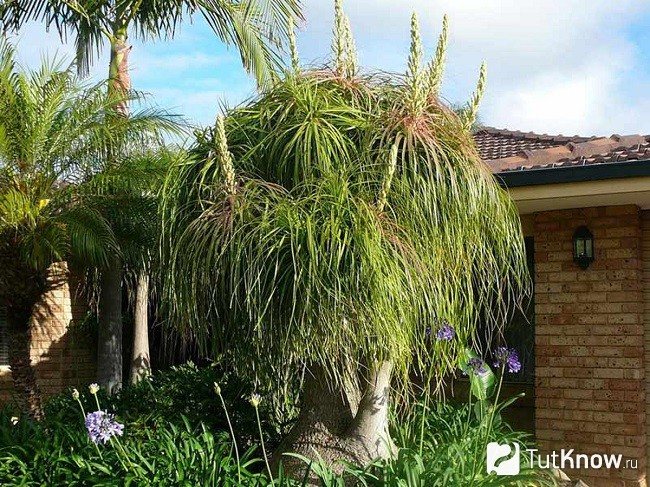

If you grow nolina in your room, then over time it will improve the microclimate in the room, enriching it with oxygen, ozone and aerons. By this, it helps to fight respiratory diseases and strengthens the protective functions of the human body. Bocarnea has a very beneficial effect on the nervous system of those present, creating a feeling of psychological comfort.
With the help of long bokarnea leaves, enterprising Mexicans have long weave their famous sombrero hats, as well as all kinds of baskets.
Description
Nolina's house is not a tall tree, covered with very dense bark, and expands downward like a pear. For this, the sapling is nicknamed the bottle seedling.
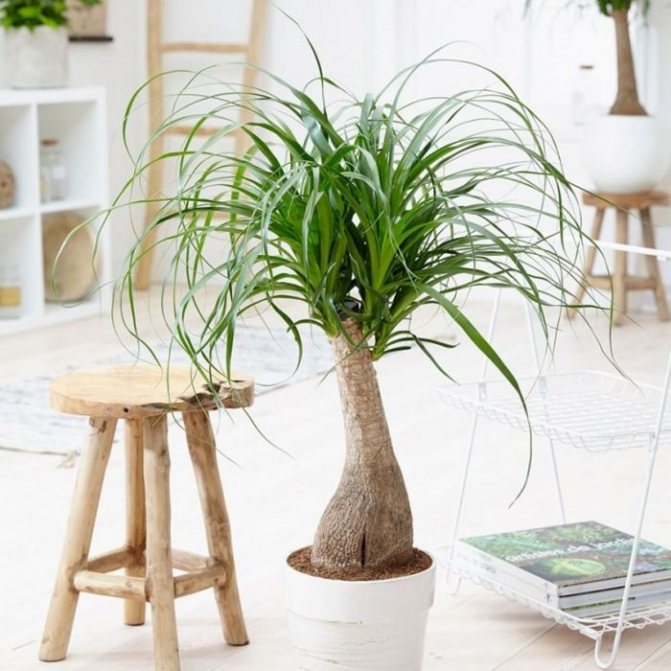

A strand of long narrow leaves of green color falls from above, like hair curling into curls.
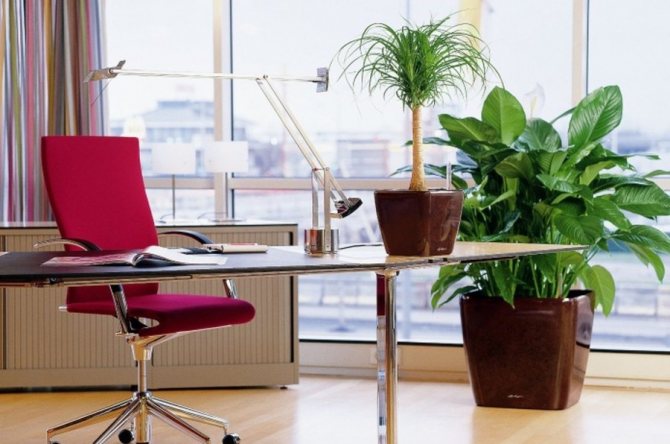

Types of bokarnea
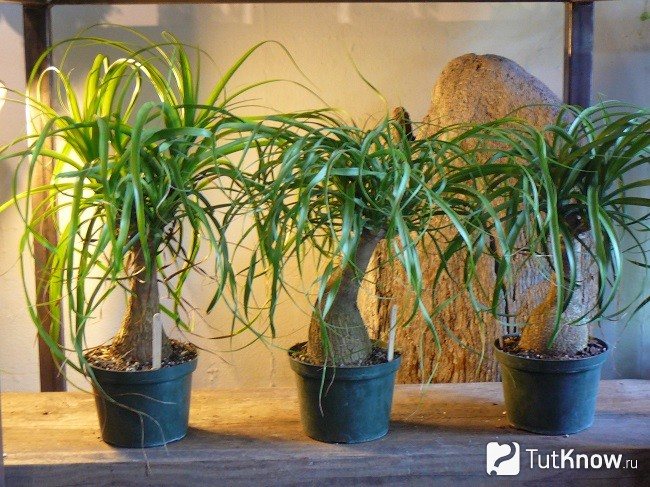

- Beaucarnea recurvata
often called Nolina recurvata. In conditions of natural growth, the height of the plant reaches 6–8 m, in a greenhouse-room culture it does not exceed one and a half meters. It has an erect, tree-like stem, with slight branching. At the base there is a thickening (caudex) with typical "bottle" outlines. The top of the stem is crowned with rosette-shaped leaf "caps" formed by leathery leaf plates painted in a rich dark emerald color. The leaf shape is ribbon-like, hanging to the ground, twisted. The dimensions of the plate reach a meter in length with a width of 1–2 cm. The inflorescence originates from the center of the leaf rosette and is a panicle composed of a large number of flowers, the petals of which are painted in cream or pinkish shades. When grown in rooms, the plant does not bloom, but in nature this process can be observed during the summer months. The native habitat of the species is in the southwestern United States. - Beaucarnea stricta
in the literature it can be found under the name Nolina stricta. This variety is very similar to the previous one. In nature, it is most often found on lands in the central part of Mexico. It, like its predecessor, is popularly called the "bottle tree" or because of the leafy "caps" the "horse's tail" or "horse palm". Can survive temperatures as low as -5 degrees. Grows indoors up to a height of 1.5 meters. At the top of the trunk, hard, thick, belt-like leaf plates grow, which are bent in an arc-like manner to the ground. Their color is light green. The lower part of the stem, where the caudex is located, is bare and covered with a smooth gray cork material, which serves as a protection against moisture evaporation. - Long-leaved bocarnea (Beaucarnea longifolia),
which has the name of Nolina longifolia in literary sources. The plant has vigorous forms and an upright stem. To the bottom there is an expansion, which also covers a thick layer of cork bark. When the plant is very old, this part of the trunk is cut with deep cracks. In natural conditions, the height of the variety is measured in several meters. Leaves of light green color form dense bunches crowning the top of the trunk. The entire leaf bends arcuately towards the soil surface, there is a strong sharpening at the tip. Over time, these leaf blades dry out and become similar to a lush, pale yellow-green-brown "skirt" that wraps around the entire lower part of the stem. The plant is ubiquitous in the Mexican vastness. - Beaucarnea lindheimeriana
, like the others, has the synonymous name of Nolina lindheimeriana. The variety is one of the shortest plants in the genus. Its trunk is practically not expressed, long rigid and durable leaf plates, drying out, become similar to light yellow-brown laces, in which the legs of travelers can get tangled. For this feature, the people are called "Devil's lace". Initially, the color of the foliage is light green, its surface is leathery, the length of the leaf reaches up to a meter. - Beaucarnea matapensis
in the literature it is also referred to as Nolina matapensis. It is a medium-high variety, reaching 1.8 meters in height in natural conditions. From dried leaves that do not fall off immediately, "skirt-like" formations arise. It is popularly called the “bergas tree”.The leaf plates are narrow, long, reaching a length of one meter, with a strong narrowing towards the apex. - Beaucarnea nelsoni
often called Nolina nelsoni, and popularly called the "blue bergra grass". The trunk of a plant, when it is especially young, is not expressed at all. In height, the variety can reach several meters. - Beaucarnea gracilis
can be found under the name Nolina gracilis. At the base there is an expanded-swollen caudex, the apex is crowned with bundles of narrow leaf plates with belt-like outlines. Their length reaches 70 cm. In rare cases, flowers appear from leaf rosettes, the petals of which are painted in pinkish or red tones, gathering in racemose inflorescences. - Beaucarnea stride
often called Nolina stride is very similar to the previous species, but has a tighter deciduous mass. - Guatemalan bocarnea (Beaucarnea guatemalensis)
synonym - Nolina guatemalensis. The native territories of growth are considered to be the lands of Mexico, Guatemala and Honduras. A plant with a very slow growth rate and tree-like outlines. The trunk has a bulge at the base, very much like a bulb. In height, it reaches 4.5–8 meters with its volume up to 3.5 m. The rosette, which grows at the top of the trunk, is assembled from long hanging leaf plates. In length, their indicators vary from 60 cm to 2 meters. When the plant is still very young, the shade of the leaves casts reddish colors, gradually giving way to a green color. Flowering is extremely rare and only when the bokarnea is mature enough.
How to care for Nolina at home, see this video:
Photo
The photo shows the plant "Nolina Rekurvata" (Bokarnea Unfolded) with proper care at home:

